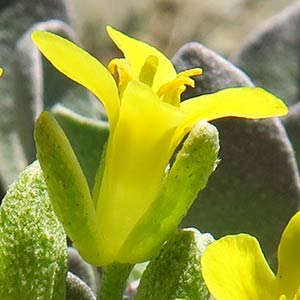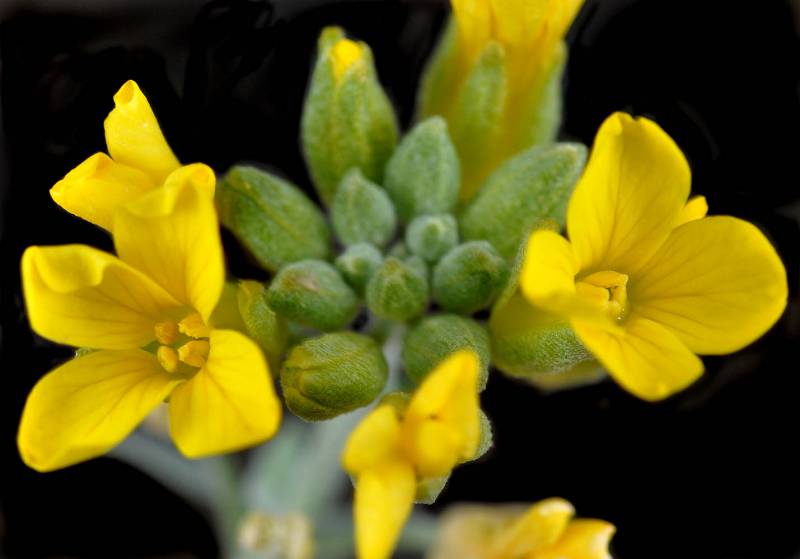Physaria alpestris
Physaria oregona
alpine twinpod, Washington twinpod
Oregon twinpod
Basal leaves numerous, 4-8 cm. long, the blade entire, oblanceolate or obovate, tapered to a slender petiole at least as long;
cauline leaves alternate, reduced, oblanceolate.
Inflorescence of short, crowded, bractless racemes; pedicles ascending, 10-15 mm. long;
sepals 4, the outer pair saccate at the base;
petals 4, yellow, spatulate, 8-14 mm. long;
stamens 6;
style 5-7 mm. long.
Silicles strongly inflated, developed in pairs, 14-18 mm. long and broad, shallowly cordate at the base, the apical sinus open, 2-3 mm. deep.
Physaria alpestris
Physaria oregona
Occurring east of the Cascades crest in Washington, where endemic to Chelan, Kittitas and Yakima counties.
Occurring east of the Cascades crest in southeastern Washington; Washington to Oregon, east to Idaho.



